Tristes Tropiques: Illustrations Hors Texte, selected by Louis Porter
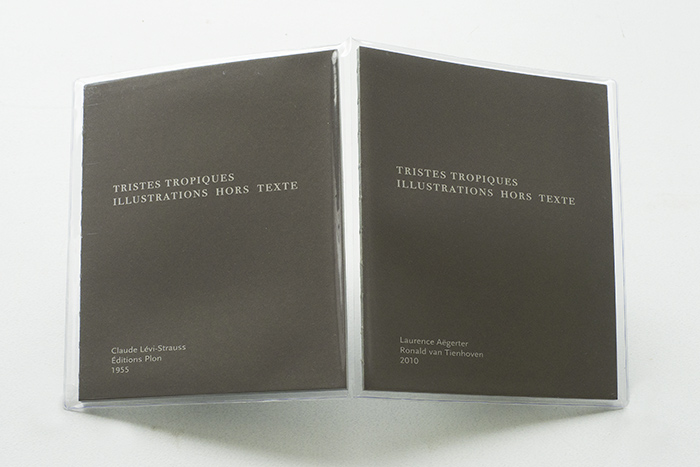
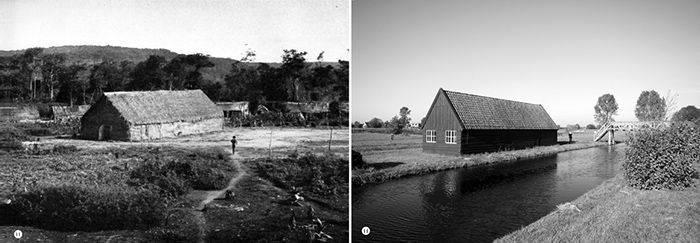
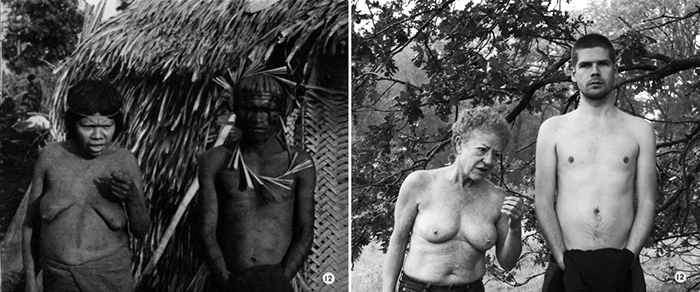
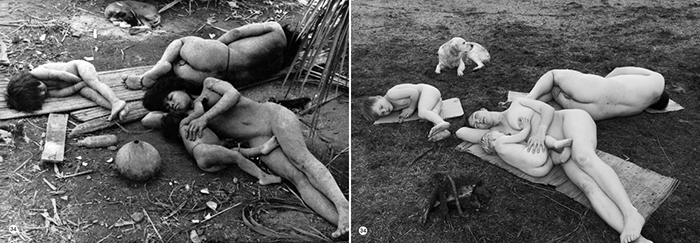
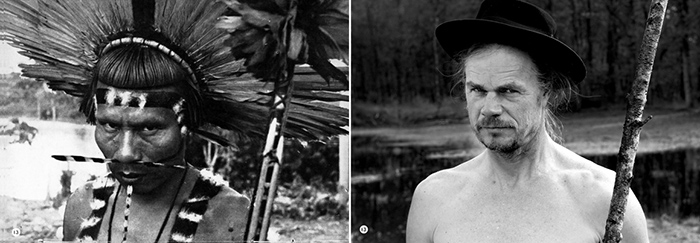
Artist: Laurence Aëgerter and Ronald van Tienhoven
Title: Tristes Tropiques: Illustrations Hors Texte
Publisher: Hors Collection
Year: 2011
BUY
Tristes Tropiques: Illustrations Hors Texte, is on first glance an unassuming publication. Two small, almost identical greyish green books, sit opposite one another in a folding plastic enclosure. The only thing that distinguishes them, the authors and dates printed on each book are different. Had I not set upon the task of viewing every single book at the Prix du Livres in 2011, I may never have gone further than that.
The first of the books reproduces the illustrative photographs from Claude Lévi-Strauss’s legendary memoir, Tristes Tropiques (The Sad Tropics) an account of the anthropologist’s work in the field, permeated with cultural and philosophical musings. The photographs depict the lives of a Brazilian tribe: their homes, dress, social activities, hunting practices and so on. The images are tender, but inevitably the modern eye cannot ignore the omnipresence of the photographer, a white traveller confronting the ‘exotic other’.
It is with the second book that something extraordinary happens. Within a few pages we realise that what Laurence Aëgerter and Ronald van Tienhoven have done, is re-photograph Lévi-Strauss’s original images in a new setting. This new setting is (as I later learnt) the small Dutch town of Beeterzwaag and in place of naked and scantily clad Brazilians, we see naked and scantily clad Dutch townsfolk. Scene for scene, action for action, Lévi-Strauss’s photographs are transposed to a different world. And in doing so, Aëgerter and Tienhoven produce a body of work that can be viewed simultaneously as an indictment of the absurdity of the ‘exotic other’ and a joyful celebration of continuity in the human condition.
This somewhat paradoxical project, that derides and re-affirms the camera’s ability to meaningfully make any sense of what culture and identity is, would have sat well with Lévi-Strauss had he lived long enough to have come across a copy. For Lévi-Strauss, cultural diversity was an un-resolvable paradox, isolation preserves it, but without outside contact it is unaware of its existence. A similar paradox exists with photography; in an attempt to preserve and share what it is that makes us different, all we have done is create a process of cultural ordering that has reduced our complex identities into a series of masks. Very occasionally, photography can rattle its own cage, and make us wonder what’s behind the curtain; Tristes Tropiques: Illustrations Hors Texte does just that.
